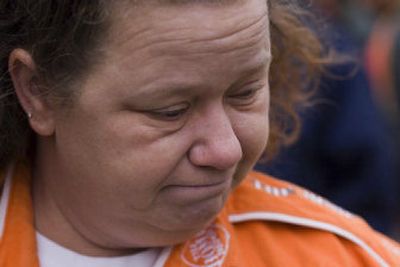Miner’s note describes hours following blast

PHILIPPI, W.Va. – In the darkness of the Sago Mine, one of 12 trapped coal miners scrawled a timeline detailing how he was alive but losing air at least 10 hours after an underground explosion, his daughter said Saturday.
“Each time he documented, you could tell it was getting worse,” Ann Merideth told the Associated Press of the note written by her father, 61-year-old shuttle car operator Jim Bennett. “Later on down the note, he said that it was getting dark. It was getting smoky. They were losing air.”
If he was lucid enough to be writing 10 hours after the blast, he could have been saved – but the rescue operation didn’t move fast enough, Merideth said.
The first rescuers didn’t go into the mine until 11 hours after the blast, a lag officials said was necessary to clear the mine of high concentrations of poisonous gases. When the miners were brought out more than 40 hours after the blast, there was only one survivor.
“I’m not sure how many miners went and was able to live as long as my father had, which I’m sure most of them did, and it really bothers me because it took them so long,” Bennett’s daughter said.
International Coal Group Inc. chief executive Ben Hatfield, whose company operates the mine, said rescuers had to follow state and federal laws that requires a methodical approach to avoid rescuers getting trapped, injured or killed themselves.
“It is painful, and it’s slow, and it was maddening as we were all just doing our level best as we were attempting to get there,” Hatfield told the AP. “And we’re going to do our best to make sure that families understand.”
Bob Friend, the federal Mine Safety and Health Administration’s acting deputy assistant secretary of labor, echoed his words, saying a primary concern in such a rescue operation is the safety of the rescue teams.
Monday’s explosion killed one miner immediately. Eleven others were found huddled two miles inside the mine behind a plastic curtain they had erected to keep out deadly carbon monoxide. The lone survivor, Randal McCloy Jr., remained critically ill Saturday.
Merideth said her father’s note, given to the family Friday by the medical examiner, has three or four entries, the first at 11:40 a.m. Monday, about five hours after the blast, and the final entry, with words getting fainter and trailing off the page, at 4:25 p.m., nearly 10 hours after the blast.
She said she had suspected there would have been a last note from her father, a deeply religious man who prayed for his fellow miners every day and planned to retire this year.
“Well, we got one yesterday. Bless his heart,” Merideth said.
“He didn’t know how much more time he had. But he wanted everybody to know to tell my mom that he loved her,” she said. “And he wanted me and my brother to know that he loved us.”